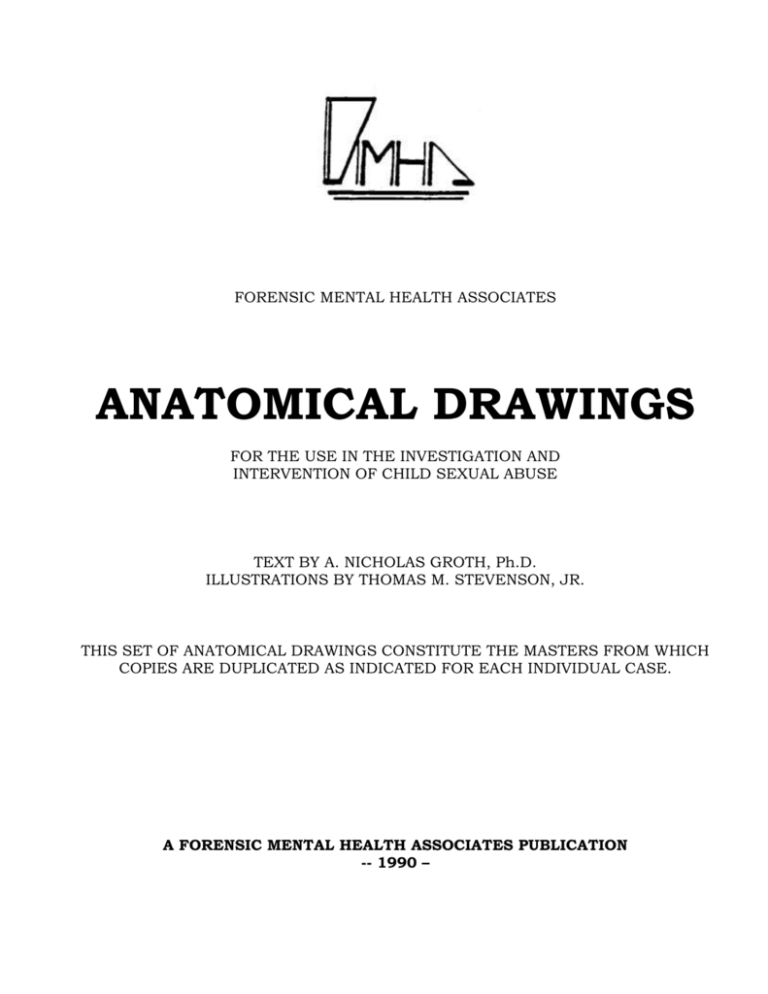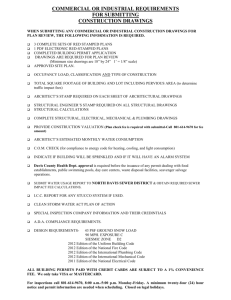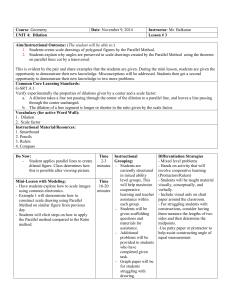
FORENSIC MENTAL HEALTH ASSOCIATES
ANATOMICAL DRAWINGS
FOR THE USE IN THE INVESTIGATION AND
INTERVENTION OF CHILD SEXUAL ABUSE
TEXT BY A. NICHOLAS GROTH, Ph.D.
ILLUSTRATIONS BY THOMAS M. STEVENSON, JR.
THIS SET OF ANATOMICAL DRAWINGS CONSTITUTE THE MASTERS FROM WHICH
COPIES ARE DUPLICATED AS INDICATED FOR EACH INDIVIDUAL CASE.
A FORENSIC MENTAL HEALTH ASSOCIATES PUBLICATION
-- 1990 –
Published by Forensic Mental Health Associates
7513 Pointview Circle, Orlando, Florida 320364336; Telephone: (407) 351-2308, Fax: (407) 351-3146
Copyright© 1964 by FORENSIC MENTAL HEALTH ASSOCIATES
All rights reserved including the right of reproduction in whole or in part in any form .
This publication is protected by copyright and may not be reproduced in part or in whole in any form for
distribution or resale. The anatomical drawings themselves may be copied for specific use in instant cases
by the purchaser/owner of the manual.
Logo designed by Canon Fern-Grant
Manufactured in the United States
First Printing:
Second Printing:
Third Printing:
Fourth Printing:
Filth Printing:
Sixth Printing:
Seventh Printing:
Eighth Printing:
Ninth Printing:
Tenth Printing:
Eleventh Printing:
Revised Twelfth Printing:
Thirteenth Printing:
Fourteenth Printing:
Fifteenth Priming:
Sixteenth Printing:
January: 1984
August 1984
January 1965
March: 1985
August: 1965
October: 1985
Apri1: 1986
April: 1987
August: 1987
December: 1 fl7
July: 1989
March: 1990
July: 1990
September 1991
February 1993
September 1993
ACKNOWLEDGEMENT
We would like to express our appreciation to Suzanne M., Sgroi, M.D.. and Edwin 0.. Wenck for the advice
and encouragement extended to us in the preparation of this publication.
Additional copies of this publication may be ordered by sending $30.00 for each copy plus $2.00 for
postage and shipping to FORENSIC MENTAL HEALTH ASSOCIATES, 7513 Pointview Circle. Orlando, FL
32836-6336; Telephone: (407)351-2308, FAX (407) 351-3148.
INVESTIGATION OF CHILD SEXUAL ABUSE
The topic of human sexuality, by and large, remains an unaddressed issue in our society,
especially in regard to children.. As a result many, if not most, children do not know the proper
terminology by which to identify the sexual parts or areas of the body or to describe sexual
activities and interactions. In investigating suspected or known cases of child sexual abuse, the
victim’s terminology for sexual parts of the body may be so idiosyncratic or the description of the
sexual activity so ambiguous that the investigator cannot clearly interpret what has transpired!!
Not only may the child’s limited vocabulatory or inaccurate terminology pose an obstacle to
investigation, but also the assessment of sexual abuse may be impeded in cases where the child
may be particularly shy or non-verbal, especially in regard to discussing sexual matters; or
where the child is intellectually limited or developmentally disabled; or where the child suffers a
physical handicap, such as a speech impediment or impaired hearing. It can be additionally
distressing and victimizing to a child who wants to explain what has occurred but, for any of the
above reasons, no one understands.
As an aid in overcoming such obstacles and to facilitate approaching the subject of sexual
abuse activity in interviewing a young victim. Forensic Mental Health Associates, Inc. has
commissioned this set of anatomical drawings by a recognized medical illustrator, Thomas M.
Stevenson, Jr. Based on a concept developed in 1978 by Edwin 0. Wenck. former Division Chief
of the Sex Offense Task Force, of the Baltimore City State’s Attorney’s Office, and used with
much success since then, our set of 32 line drawings consists of front and back anatomical
views of white and black males and females at four chronological phases of development
preschool, preadolescence, adolescence, and adulthood.
HOW TO USE THESE DRAWINGS
After establishing rapport with the child these drawings may be introduced as an activity
to clarity and/or document one’s investigation: “I want to better understand what went on (or
what happened)”. We suggest you make copies of the drawings from the master set which the
child and/or you can then mark up with a colored marker. You might introduce the drawings
with some statement such as, “I am going to show you some drawings (or coloring book pictures)
of persons who are undressed. I would like you to look through them and pick out the one that
most resembles (or looks like) you.” After the child has made her/his selection: “Now pick out for
me the drawing that most looks like (the suspected/identified perpetrator).” You might have the
child put her/his name on the drawing that represents her/him and the name of the perpetrator
on the respective drawing.. You should put your name on these drawings as the examiner
together with the date of the interview, the name of the child being interviewed, and name of the
individual the drawing represents.
You might then use the drawings to clarify the child’s terminology. For example, if the
child states, “He made me touch his ‘thing’.” you might say to the child: “Would you please draw
a circle around what you mean by his ‘thing’ on this picture of (the perpetrator).” The interviewer
can then label the body part circled on the drawing by the child the ‘thing’. If the child has said.
“He played with me.” and you determined that the “playing” involved touching, you might
instruct the child to put an “X” on all the areas of the drawing of the child’s body where the
perpetrator touched or “played with” her or him. Or having established that physical contact
occurred between the offender and the victim, you might point to various body areas on the
drawing and ask, “Did he touch you here? Or here? Or here? etc” and then indicate on the
drawing where the child’s response was affirmative and where it was negative. It may be
necessary to establish whether or not the offender and/or the victim was undressed with regard
to the sexual abuse. If either were partially or completely clothed, note this (perhaps sketch the
clothes on the figure) and then determine whether the physical contact occurred over the
clothing, or whether parts of the body were exposed, or whether the body areas were touched by
putting hands inside the clothes.
Once the interview or series of interviews with the child has been completed, as many
copies of the marked-up and labeled drawings as needed may be made and the original (marked)
copies can be introduced as evidence in civil or criminal proceedings pertaining to the case., The
instructions to the child may be varied somewhat from case to case and should be adapted to
suit the special conditions of each specific child or individual situation. However, we would
advise against using such terms as “let’s pretend” or “let’s imagine” in giving instructions to the
child since it might than be argued that the results of the investigation reflect the imagination of
the child or constitute a pretense on her/his part. It would be better to use instructions such as
“let’s say this is you” or “consider this a drawing of (the perpetrator).”
In addition to their help in providing clarification of the child’s responses and
documentation of her/his sexual victimization, these drawings can also be made use of in a
number of other ways. Asking the child, “Have you ever seen any drawings or pictures like these
before?” may allow you to explore the possibility of the child having been exposed to
pornography or manipulated into being photographed in a sexual fashion. The figure drawings
can be cut out and made into paper-dolls or the drawings themselves can be used as an
intermediate step in introducing the child to anatomically correct dolls. Some children who will
shy away from sexually explicit dolls are not as uncomfortable with the drawings, and the nonverbal child who experiences difficulty in articulating the doll play activity may be more
comfortable in pointing to, or drawing circles around, or making X’s on a drawing. Also, drawing
and coloring are not as sex- ‘role specific an activity to the same degree that playing with dolls is
and, therefore, the drawings may be a more comfortable task for boy victims than doll play
would be for them. The anatomical drawings may also be used to clarify free-hand artwork
and/or puppet-play by a child who is known or suspected to have been sexually victimized
much in the same fashion as they are used to clarify a child’s verbal communication. Finally, the
precedent of using such drawings to investigate and corroborate child sexual abuse has been
established by a public prosecutor’s office, the City of Baltimore State’s Attorney’s Office, and
their use is court-acceptable, having been designed by a recognized or expert medical illustrator.
This set of drawings, then, is a tool to assist in investigation and intervention. It is not a
substitute for clinical skill and experience.. The responsible interviewer should be familiar with
the psychology and characteristic behaviors of sexual offenders against children, the dynamics
of such offenses, the impact on the victim, and the diversity of resulting symptomatic behaviors
on the part of children who have been sexually abused. In the hands of such an examiner the
drawings can help structure and order a systematic inquiry and develop a standard format for
evaluation of known or suspected child sexual victimization.
*Should a child react adversely to viewing these drawings, this could be regarded as
clinical evidence of a sexually traumatized child Edwin O. Wenck reports no such adverse
reaction occurring in over 1000 cases in which similar drawings were used by the Sex Offense
Task Force of the Baltimore City States Attorney’s Office
ANATOMICAL DRAWINGS
ABOUT THE ILLUSTRATOR
RESUME:
Date of Birth:
Marital Status:
Children:
THOMAS M. STEVENSON. JR.
August 20. 1922
Married
Four (2 boys and 2 girls)
Work Experience:
1983-Present
Retired from University employment: does free-lance art work
1949-1983
Full-time employment at the University of Maryland in the School of Medicine:
Head, Graphic Art. School of Medicine
Director of Illustrative Services
Medical Illustrator and Instructor in Art
Involved in all phases of in-plant art production, illustration, graphic
design, schematics posters, signs, displays, exhibits serving Baltimore
City Campus, affiliated hospitals, State and Federal agencies.
Other Professional Experience:
Free lance art work, oriented primarily for medical subject matter.
Displays, illustrations, etc. for Maryland and American Mean
Associations; e.g., all of the early original art work associated with
teaching closed chest and mouth to mouth resuscitation, distributed
internationally.
Illustrated one complete textbook on clinical anatomy.: co-authored a
paper on jaundice.
Illustration renderings for many articles written for publication by
physicians and other medical personnel
Illustrative material for law firms involved in medical litigation.
Education:
Awards:
Graduate of Virginia Public School System.
National Art School. Washington. D.C.: Commercial Illustrating
University of Maryland, Special Student: Medical Illustration,
Anatomy, Histology, Moulding and Casting, Photography
Maryland Art Institute: Sculpturing, Modeling, Portrait Drawing,
Painting Still Life, Life Sketching
University of Maryland, School of Medicine, 1966. Certificate for valued assistance
in Biomedical Engineering
Technical and comprehensive illustrations contributed directly to the
development of an artificial kidney.
An work contributed to the development of a prototype hyperbaric
chamber used for treatment of shock resulting from trauma.
Professional Memberships
or Affiliations:
Association of American Medical Illustrators.
National Biological Photographers Association.
Maryland Industrial Photographers Association.
Baltimore Art Directors League.







